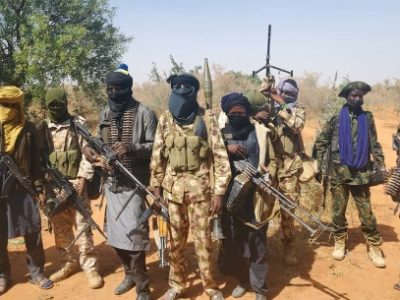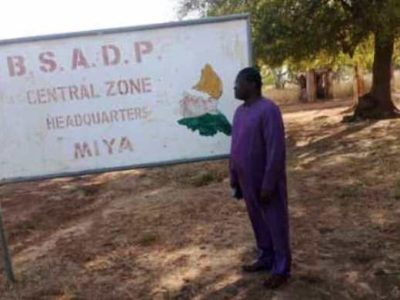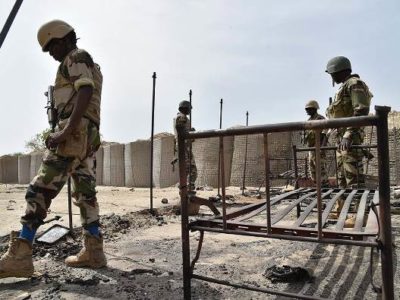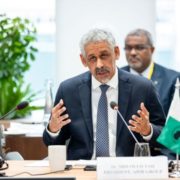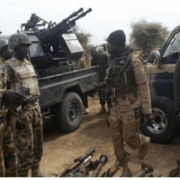By Joe Anuga PhD
From the 1790s when the industrial system emerged in England it has guaranteed that technological innovation is closely tied to economic development. This fostered the technological revolution that defined the West and its diaspora from the 19th century when as industrial capitalist powers they confronted the rest of the world and dominated them all. The technological revolution also defined the nature of wars between Western nations.
The mobilization of the whole nation by France during the Revolutionary Wars (1792-1802) and the Napoleonic Wars (1803-1815) resulted in the same methods becoming the norm in other countries and soon armies made up of hundreds of thousands of men armed with the latest weapons technology could provide faced each other on battle fields across Europe [For instance during the French invasion of Russia in 1812 the French army at its height had over 680,000 men and suffered over 480, 000 casualties while the Russian army at its height had over 620, 000 men and took about 400, 000 casualties].
As destructive as these wars were, the combination of technological innovation and mass industrial production in the weapons manufacturing sector meant that the next war requiring the full commitment of any major Western nation would be more destructive than anything that came before. The dead and missing after the Napoleonic Wars were staggering. The Coalition countries confronting the French had lost at least 4 million of their citizens and soldiers by the end of the fighting in 1815; while the French and their allies had lost at least 2 million of their soldiers and citizens by the time the guns were silent.
Western Europe was a little ‘fortunate’ that after 1815, there was no war involving all of its major powers for a hundred years. The first major war in which the belligerents fought on an industrial scale in the Western hemisphere happened within the borders of the USA. This conflict, the American Civil War (1861-1865) between the northern and southern states of the union was a bloody affair. It left well over 700, 000 of the combatants and civilians dead at its conclusion. Since it was a civil war and in faraway America the horror was lost on many in Europe.

Russia/Ukraine/NATO War: The West could collectively bleed itself to that point of vulnerability to be exploited by other members of the global community
Thus when all the leading powers in Europe became embroiled in the unraveling of a complex system of alliances in late 1914, no one alive had any idea how destructive the coming conflict would be. The First World War (1914-1918) however proved that war between industrial powers was a very dangerous prospect for all mankind. The loss of millions of lives, the destruction of property valued in billions and the stretching of resources to the breaking point took its toll and the world was never the same again. This war led to the loss of at least 17 million lives by the time it came to an end.
From a level of unrivalled preeminence in global affairs, the West collectively bled themselves to the point where their vulnerability began to appear to perceptive members of the rest of the global community. Leaders of the West correctly assessed that such an outcome as general war among them was bad for everyone and they decided to put in place mechanisms to guarantee that it never occurred again. The League of Nations was born and an era in which it was hoped diplomacy would triumph over war had finally entered human relations. That was the hope.
The reality was that with the failure of the League of Nations, another general war among the major industrial powers which ended up being even more destructive than the first one began within thirty years with World War Two. Estimates from national archives, the reports of the military establishments of the leading combatant nations and scholars engaged in this field of studies over 80 million people lost their lives in this war with the USSR and China accounting for over half of the dead. Considering the estimated population of the world by 1937 when large scale fighting began in China the dead accounted for almost 3% of the global population of the time.
This war was so destructive that it ensued that the Western advantage over the rest of the world could now be safely challenged and shortly after it ended the empires acquired by Western nations around the world began to crumble. One of the outcomes of the close ties between technological innovation and industrial production was the development of the atomic bomb during World War Two. The US was the first nation to develop and use the atomic bomb but soon other countries got their hands on it as well.
From being allies, the rivalry between the USA and the USSR quickly degenerated into the Cold War (1947-1991) and an arms race. As the main rival and ideological enemy of the US, the USSR not only laid its hands on the atomic bomb it developed significant advances in rocket technology enabling it to harness them as delivery systems for the bomb. The USA also developed rocket technology to the point of landing men on the moon. All of a sudden, nowhere was safe on the planet for humanity in the event of a nuclear war between these superpowers.
The destructive capacity of weapons developed after the Second World War dwarfs the destructive power of all weapons that were made before them (from the Stone Age to World War One) combined. What to do about the destructive capabilities that the ruling elites of the countries that have nuclear weapons now have has continued to task statesmen and theorists since the end of the Second World War.
The importance of avoiding war between the superpowers was immediately evident by the end of the Second World War in 1945. Apart from the fact that there was war weariness among the majority of the population of the industrial countries after so many years of violent conflict, their economies were in very bad shape and would task virtually all the resources they had to rebuild. However the reality of the ideological difference between the USSR with its commitment to communism and the US led West which was capitalist at the core portended a future paved with conflicts around competing visions of what the good life should be.
It was in this atmosphere that the United Nations Organization (UN) was born. To institutionalize the mechanism chosen to guarantee the avoidance of war between the most highly industrialized countries the UN Security Council was created. The consent of the Security Council was needed to trigger UN involvement in developing security threats or actions anywhere in the world. The Permanent Members of the Security Council made up its highest decision making body.
They were five in number the US, the USSR, Great Britain, France and China. They were each given the power to veto any decision of the UN that they felt infringed on interests they considered vital enough to engage in all-out war over. Western Germany and Japan were also highly industrial states but as they were occupied by the US, their foreign policy tended to align with those of the US. In this way, though war was not banished from the world, a serviceable mechanism had been institutionalized to reduce the potential of it breaking out among the most industrialized nations in the world.
Another thing that helped prevent war from breaking out directly between the USSR and the US was the sheer destructive power behind their huge arsenals of nuclear weapons. They had both developed delivery systems using long range ballistic missiles on land, through nuclear capable aircraft and by nuclear submarines. This meant that even if one power was able to strike first to destroy the other, the retaliatory strike of the other using its nuclear submarines and nuclear capable aircraft also guaranteed that it would destroy its attacker. The reality that both could destroy each other led the US strategist Donald Brennan to coin the term Mutually Assured Destruction (MAD).
This state of things held till 1991 when the USSR collapsed leaving the US as the sole superpower in global affairs. The Russian Federation inherited the prerogatives of the USSR but was nowhere near the economic power it had controlled. It however kept the USSR’s nuclear weapons and delivery systems. It received significant though not ultimately sufficient economic help from the Western powers as it tried to introduce market economic reforms into its erstwhile communist economy. Despite this it managed to modernize its military capabilities making it the country with the largest arsenal of nuclear weapons in the world.

Credit: Don Curzio Nitoglia (taken from Strange Maps #1135)
Meanwhile after the fall of the USSR, the US had a free run as the only superpower remaining and assumed responsibility for maintaining the core mechanisms of the world order. It intervened militarily in different parts of the world from Iraq during the first Gulf War (1990) and Kosovo in (1999) to its invasion of Afghanistan in (2001) with Russian support. The Russian Federation too had a series of military adventures with non-industrialized countries after the fall of the USSR. It fought two Chechen wars (1994-1995; 1999-2000), invaded Georgia (2008) and intervened militarily in Syria (2015) to protect the Bashar al Assad regime against the wishes of the US and its allies.
By 1991, the US retained its role as only superpower because it led undisputedly in both economic and military capabilities. While the Russian Federation was able to compete with the US at the level of nuclear weapons and their delivery systems after it had modernized its military by 2012, it was no match for it economically. The US defense budget alone in 2019 was US$ 1.3 trillion compared to the entire Russian Federation GDP of 2019 which was US$ 1.69 trillion clearly shows that the US is way ahead of the Russian Federation economically by a significant factor.
During the Cold War, the US and its allies had created the North Atlantic Treaty Organization (NATO) (1949) while the USSR responded with the creation of the Warsaw Pact (1955). With the end of the Cold War, the US and its allies, the Russian Federation, the countries of Eastern Europe as well as some former republics within the USSR had different perspectives on the future role for NATO in Europe. From his last interview with the BBC, Mikhail Gorbachev, the last ruler of the USSR said that the understanding he had about NATO was that once Germany was unified, it had to become a neutral country since the Warsaw Pact which Eastern Germany belonged to was dissolved. This was never written down and was ignored by NATO which promptly accepted the united Germany into its fold.
In a 2008 speech at the NATO summit in Bucharest the Russian ruler, Mr. Putin voiced his opposition to the eastward expansion of NATO which he considered as threatening Russian security in an unacceptable manner. He was ignored by the Western leaders generally and no perceptible change in Western foreign policy as far as NATOs eastward expansion could be seen. In that year Russian forces invaded Georgia to guarantee that its government would not have the opportunity to join NATO which the Russian government disapproved of.
From the point of view of eastern European countries like Poland, the Czech and Slovak republics, Bulgaria and the small Baltic Republics of Latvia, Estonia and Lithuania, the rebuilding of the military capabilities of the Russian Federation was unsettling and they clamored to get into NATO. The alliance welcomed them and though the Russian President Mr. Putin disapproved, there was nothing he could do.
However when in 2014 the Republic of Ukraine suffered a coup which overthrew its pro-Russian President Mr. Yanukovich and replaced him with a pro-Western government intent on joining NATO, a series of events virtually leading up to the possibility of all out nuclear war has been set in motion. For reasons of his own Lenin who ruled the USSR from 1917 to 1924 transferred the historically Russian territories in a belt running from Odessa through Nikolayev, Zaparozhia, Kherson, Donetsk and Luhansk to the Ukrainian republic within the USSR. In 1954, Nikita Khrushchev transferred the Crimea to Ukraine as well.
These transferred territories were made up of primarily ethnic Russian people and under the USSR these transfers did not result in these populations feeling that they were being discriminated against as a result of their ethnicity. With the collapse of the USSR and the coup in 2014, things changed significantly. In the first place, after the 2014 coup, the Russian President Mr. Putin invaded and occupied Crimea which housed the headquarters of the Russian Federation’s Black Sea fleet. There were protests against the coup in some of the territories with ethnic Russian majorities but open rebellion was proclaimed in the Donbas republics of Donetsk and Luhansk.
After a series of military confrontations in these Donbas republics, a peace accord was signed in Minsk in 2014 which bound the Ukrainian authorities to granting these republics autonomy within the boundaries of Ukraine. France and Germany were to be the guarantors of these accords with the Russian Federation. These accords were observed in the breach and were generally ignored as fighting in the Donbas between the Ukrainian government and the rebels continued with varying intensity from 2014 to 2022.
A diplomatic resolution to these conflicts has not been found and they were escalated to a whole new degree by the Russian invasion of Ukraine in February 2022. With the subsequent decision of NATO to unequivocally support the Ukrainian government the world has now found itself on the brink of a shooting war between the most heavily nuclear armed countries on the planet. The tragedy of the ongoing destruction of Ukraine as unfortunate as it is for Ukrainians, risks taking the entire world into a much greater tragedy: the possible extinction of the human race.
The horror of total war between industrialized countries during the twentieth century ought to have imprinted in the minds of statesmen in this century the idea that the avoidance of war between industrial powers is the only way to gauge the success or failure of their foreign policy. Who is right or wrong will only be determined by the one who deescalates the spiraling situation in Ukraine and sets the stage for diplomacy to prevail.
The current approach to the unfolding Russia-Ukraine-NATO war which sees the Russian Federation forcefully imposing its will within Ukraine and the NATO alliance funding and supporting Ukrainian resistance to the Russians in a clearly unbalanced conflict with the Russians having the advantage on the ground in nearly all departments militarily is a situation hanging by a thread with the risk of spreading and turning into something worse.
Already this war has affected global energy supply chains leading to volatility in the prices of energy in the international markets. As things stand now both Russia and the West have been suffering negative impacts as a result of this conflict. Other regions of the world too have been affected in various ways but it is vital to point out that all these negative consequences pale when compared to the devastation that can happen in the event of a nuclear war between Russia and the NATO alliance.
The longer this conflict lasts, the greater the possibility of such an outcome. The view from Africa therefore is that only actions moving the difference of understanding between the Russian Federation on one hand and the NATO alliance and Ukraine on the other towards prioritizing diplomacy over violent conflict will be considered either as mature or humane.

Joseph Anuga, Associate Editor at Baobab Africa, lectures at the University of Jos · Department of Political Science




